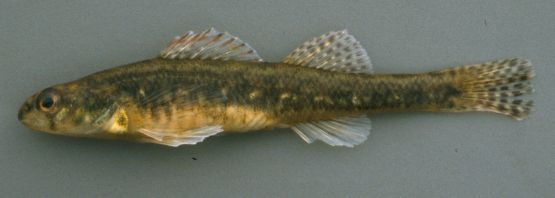Adaptation
As shown on the Classification page, the Iowa Darter is classified as Etheostoma exile. Etheostoma means straining mouth, but no one knows where the idea of the straining mouth came from (Dickson 2009). The species exile means slender, which refers to the long and slim body the Iowa Darter has.
Iowa Darters lack a swim bladder, and because of this, they sink to the bottom of the stream or lake (Dickson 2009). As a darter, this organism wriggles its body to move, and moves very quickly. The lack of a swim bladder is important because instead of using the energy used from a swim bladder to float off the bottom of the lake or stream, the Iowa Darter can use its energy to look for food instead (Dickson 2009). By lacking a swim bladder, the Iowa Darter uses less energy than most other fishes, making it able to search for food longer.
The Iowa Darter has also adapted to help its own species and other species. When undisturbed, Iowa Darters usually are found on the bottom of the stream or lake (Copes 1986). However, when disturbed, they swim or "dart" forward and burrow themselves into debris (Copes 1986). The Iowa Darter releases disturbance pheromes from its epidermis when it feels threatened to warn others of the presence of a predation threat (Wisenden et al 1995). The Iowa Darter also releases the disturbance pheromes when it is injured to confirm a threat to its own species and to others.
For more information, follow this link:
http://fwp.mt.gov/mtoutdoors/HTML/articles/portraits/iowadarter.htm
Permission to use this image of the Iowa Darter has been given by John Lyons.
Go to Home!
Go to Nutrition!

